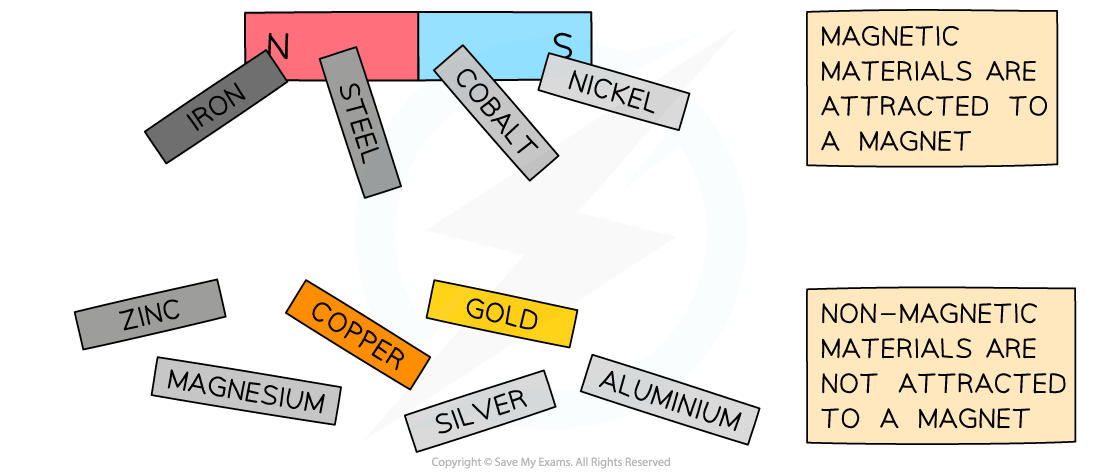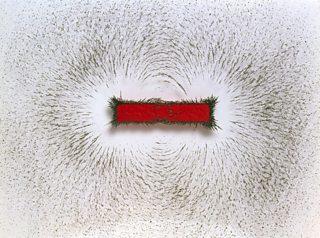Chapters
Magnets possess a remarkable ability to attract and repel, captivating our curiosity and fueling technological advancements. In this article, we delve into the world of magnetic materials, exploring their unique properties and the wide range of applications they enable. From permanent magnets that generate their magnetic fields to induced magnets that come to life in the presence of magnetism, we uncover the secrets behind their magnetic allure. Join us on this journey as we unlock the power of magnets and their significant impact on our everyday lives.

Magnetic Materials
We can define magnetic material as:
"Any substance that can feel a force when it is near a magnetic field is known as a magnetic material"
It's important to know that not all metals are magnetic, even though all magnetic materials are made of metal. Some examples of magnetic materials that you should remember are:
- Iron
- Steel (which is a mixture of iron and other elements)
- Nickel
- Cobalt.
However, it's worth noting that copper and aluminium are not magnetic, so they don't respond to magnetic fields.
Testing for Magnetic Materials
Magnetic materials, which are not magnets themselves, will always be attracted to a magnet, regardless of which pole the magnet holds close to them. To determine whether a material is a magnet, we can perform the following simple test:
- Bring the material close to a known magnet and observe its behaviour.
- If the known magnet repels the material, it means that the material itself is a magnet.
- This is because like poles (either two North or two South poles) repel each other.
- On the other hand, if the material is only attracted to the known magnet and cannot be repelled, it indicates that it is magnetic.
- This means that it can feel the force of the magnetic field and is attracted to the magnet, but it does not possess its magnetic properties.
Therefore, this test helps us distinguish between magnets and magnetic materials. Magnets can both attract and repel, while magnetic materials can only be attracted to a magnet and not repelled. Common magnetic materials include iron, steel (an alloy of iron), nickel, and cobalt. It's important to note that materials such as copper and aluminium are not magnetic and will not be attracted to a magnet.

Hard and Soft Materials
Let's explore the concept of hard and soft materials.
Magnetically Soft Materials
Magnetically soft materials, such as iron, have some exciting characteristics. Firstly, they are easy to magnetize, meaning they can quickly become magnets when exposed to a magnetic field. However, they quickly lose their magnetism when the external magnetic field is removed. This makes them suitable for applications where we need magnets that can be easily turned on and off.
Magnetically Hard Materials
On the other hand, we have magnetically hard materials, like steel. These materials are more difficult to magnetize than soft materials. Once magnetized, they do not quickly lose their magnetism, even when the external magnetic field is no longer present. Permanent magnets, used in everyday objects like speakers and fridge magnets, are made from magnetically hard materials. We want them to retain their magnetic properties long without losing their magnetism.
Understanding the properties of hard and soft magnetic materials enables us to design and utilize different magnets for various purposes.
Permanent and Induced Magnetism
Let's dive into the concepts of permanent and induced magnetism in detail:
Permanent Magnets
They are usually made from magnetic materials, like iron. What sets permanent magnets apart is that they generate their magnetic field. This magnetic field is always present and cannot be switched on or off. Examples of permanent magnets include bar magnets and horseshoe magnets. When a permanent magnet interacts with other magnets or magnetic materials, it always exerts a force on them. We can perform the following test to determine a permanent magnet:
- Firstly, a permanent magnet can attract or repel another permanent magnet.
- If we bring two magnets close together and they push each other away or pull towards each other, it indicates that at least one of them is a permanent magnet.
- Secondly, a permanent magnet can attract a magnetic material, such as iron, but cannot repel it.
- If we bring a magnetic material close to a magnet and it gets pulled towards the magnet, it suggests that the magnet is a permanent magnet.
So, to determine if an object is a permanent magnet, we perform a simple test: check if it repels another magnet. If the object exhibits repulsion towards another magnet, it confirms that the object itself is a permanent magnet.
This testing method allows us to distinguish between ordinary objects and permanent magnets, as only permanent magnets can repel other magnets. By understanding this principle, we can identify and explore the fascinating properties of magnets in various applications.
Induced Magnets
Have you ever observed iron filings being drawn towards a bar magnet? Those iron filings temporarily acquire magnetism, becoming what we call induced magnets. Unlike permanent magnets, induced magnets only become magnets when placed within a magnetic field. However, the magnetism they acquire quickly diminishes when they are removed from the magnetic field.
Consider the iron filings in the diagram below:

When they are near the bar magnet, they become induced magnets. It's important to note that induced magnets are only attracted to other magnets, just like the iron filings. They do not repel other magnets. Additionally, when removed from the magnetic field, they lose most or all of their magnetism.
Understanding induced and permanent magnetism lets us understand how different materials respond to magnets and magnetic fields. It reveals the captivating nature of magnetism and its influence on various substances.
Applications of Magnets
Magnetic Separation for Sorting Waste Materials
Magnets separate useful magnetic substances like steel and iron from waste materials. This process, known as magnetic separation, involves using an electromagnet fitted to the long arm of a crane. The electromagnet is lowered over the heap of waste material, switched on, and attracts old iron and steel objects present in the waste. The crane then lifts the arm with the objects attached to the electromagnet and moves to another location. When the current is switched off, the electromagnet loses its magnetism, and the waste is dropped and collected separately.
Magnetic Compass for Finding Directions
Magnets possess a directive property that allows them to be used in magnetic compasses. A compass consists of a tiny magnetic needle that is free to rotate and is pivoted at the centre. The compass has a circular dial with marked directions. The needle of the compass always aligns itself in the north-south direction. Soldiers in the jungle and sailors at sea use compasses to find their way and determine directions.
Other applications
Magnets have widespread applications in numerous appliances and everyday items. They are used in electric motors, which power devices like fans, washing machines, and electric generators. Doorbells rely on magnets to produce sound when activated. Magnets also play a role in the functioning of televisions and serve as essential components in tools and various types of toys. Furthermore, magnets securely place objects such as refrigerator doors, pencil box lids, and magnetic stickers.












You are the best,, coz you have gotten content about the topics
Hello ! Glad to hear that you’ve found the content useful!